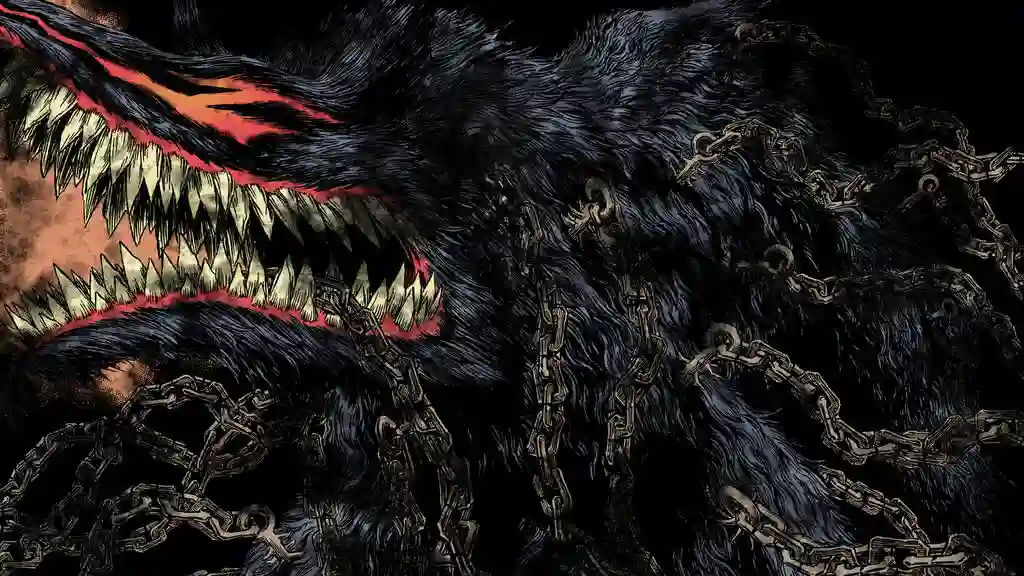
The Significance of the Beast of Darkness in Guts’ Character
Kentaro Miura’s dark fantasy epic, “Berserk,” presents readers with a complex and multifaceted protagonist in the form of Guts, the Black Swordsman. Throughout his tumultuous journey, Guts grapples not only with external threats but also with the internal demons that threaten to consume him. One of the most symbolic and enigmatic aspects of his character is the Beast of Darkness. In this article, we will explore the significance of the Beast of Darkness in Guts’ character and the role it plays in his ongoing struggle for survival and redemption.
The Birth of the Beast
The Beast of Darkness first emerges in Guts’ psyche following the traumatic events of the Eclipse, a nightmarish ordeal during which he witnesses the brutal deaths of his comrades and is marked with the cursed Brand of Sacrifice. This demonic entity is a manifestation of Guts’ inner turmoil, born from the deep emotional and psychological scars left by the Eclipse.
The Beast represents Guts’ darkest desires and impulses, including his thirst for vengeance against Griffith, the former leader of the Band of the Hawk, and his lust for violence and destruction. It embodies the trauma and rage that threaten to consume him, serving as a reflection of the darkness that resides within every human soul.
A Persistent Presence
Throughout the “Berserk” series, the Beast of Darkness remains a persistent and ominous presence in Guts’ life. It appears to him in moments of extreme stress, danger, or despair, urging him to give in to his most primal instincts. These encounters serve as a constant reminder of the darkness that lurks within Guts and the precarious balance he must maintain to prevent it from taking control.
The Beast’s appearances are often depicted as unsettling and surreal, with its grotesque and nightmarish visage serving as a visual representation of Guts’ inner turmoil. Miura’s artwork masterfully captures the eerie and unsettling nature of these encounters, heightening the tension and psychological complexity of the narrative.
The Temptation of Revenge
One of the primary themes associated with the Beast of Darkness is the temptation of revenge. Following the Eclipse and Griffith’s betrayal, Guts’ desire for vengeance burns intensely. The Beast fuels this desire, urging Guts to forsake his humanity in pursuit of retribution against Griffith and the God Hand.
The internal struggle between Guts’ desire for revenge and his innate humanity is a central conflict in the series. The Beast’s constant presence serves as a reminder of the destructive path that vengeance can lead to, while Guts’ own resilience and moral code act as a counterbalance, preventing him from succumbing entirely to the Beast’s temptations.
The Curse of the Brand
The cursed Brand of Sacrifice, which marks Guts as a sacrifice and attracts malevolent entities known as apostles, is a central element in the Beast of Darkness narrative. The Brand serves as a symbol of Guts’ trauma and suffering, as well as a literal beacon for the supernatural forces that seek to end his life.
The Brand’s curse intensifies Guts’ connection to the spiritual realm, making him a magnet for apostles and other demonic beings. This constant threat reinforces his sense of isolation and vulnerability, amplifying the influence of the Beast of Darkness as it urges him to become a predator rather than prey.
The Struggle for Redemption
While the Beast of Darkness represents Guts’ darker impulses, it also plays a crucial role in his quest for redemption and healing. Throughout the series, Guts is confronted with the consequences of his actions and the toll that his pursuit of vengeance has taken on those around him, particularly Casca, who has suffered greatly due to his choices.
The Beast’s presence serves as a stark reminder of the potential for destruction and harm that lies within Guts. It forces him to confront the darkness within himself and grapple with the moral consequences of his actions. This internal conflict becomes a driving force for Guts’ ongoing struggle to find a path to redemption and, ultimately, a means to protect and heal Casca.
The Healing Power of Companionship
One of the most powerful themes in “Berserk” is the healing power of companionship. Guts’ journey is marked by the bonds he forms with a diverse group of individuals, including Casca, Isidro, Farnese, Serpico, and others. These relationships provide moments of solace and connection amidst the darkness of his world.
The presence of these companions also serves as a counterbalance to the influence of the Beast of Darkness. Guts’ connection to others anchors him to his humanity and prevents him from fully surrendering to the darker aspects of his nature. It underscores the importance of human connection in the process of healing and redemption.
Conclusion
The Beast of Darkness in “Berserk” is a symbol of the internal struggle that defines Guts’ character. It represents his trauma, rage, and desire for vengeance, as well as the potential for darkness that resides within every individual. While the Beast poses a constant threat to Guts’ humanity, it also serves as a catalyst for his ongoing journey of self-discovery, healing, and redemption.
Kentaro Miura’s masterful storytelling and intricate character development create a narrative that explores the complexities of the human psyche and the enduring power of the human spirit to confront and overcome even the darkest of inner demons. Guts’ relentless struggle against the Beast of Darkness is a central theme in “Berserk,” highlighting the resilience of the human soul in the face of profound adversity.